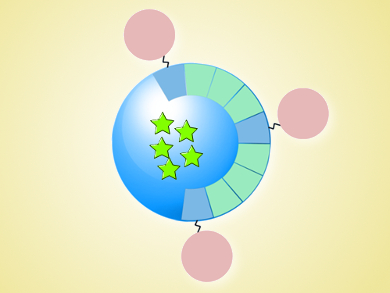Nanoparticles that are decorated with functional biological groups are useful vehicles for numerous theranostic applications, which combine therapeutics and diagnostics into one system.
Ehud Gazit, Lihi Adler-Abramovich, Tel Aviv University, Israel, and colleagues developed an alternative strategy to prepare functional nanoparticles, in which the targeting moieties also act as building blocks for the formation of functional nanoassemblies. The team combined diphenylalanine and a somatostatin analogue, a modified hormone which binds to cancer cells. The building blocks co-assemble and form bioactive spherical nanostructures.
The team used confocal microscopy to show that the nanoparticles are able to bind to human pancreatic cancer cells in vitro. They could play a dual role of both nanocarrier and bioactive targeting component. The functionality of the supramolecular co-assembly was also tested in mice, and a selective accumulation of the nanospheres in tumors was found. According to the researchers, other targeting moieties, imaging agents, and drugs could be bound to diphenylalanin to produce a range of theranostic agents.
- Molecular Engineering of Somatostatin Analogue with Minimal Dipeptide Motif Induces the Formation of Functional Nanoparticles,
Talia Shekhter Zahavi, Mor Oron-Herman, Genady Kostenich, Eyal Rub, Yoseph Salitra, Ludmila Buzhansky, Arie Orenstein, Ehud Gazit, Lihi Adler-Abramovich,
ChemNanoMat 2016.
DOI: 10.1002/cnma.201600220

